Cell division is one of the most fundamental biological processes that sustain life. Every living organism, whether unicellular or multicellular, begins its journey as a single cell. Through a highly organized and regulated series of events, this single cell divides and multiplies to form the complex structures that make up the organism. In this blog, we’ll explore cell division, its types, the intricate stages involved, and why it plays such a pivotal role in all living systems.
Understanding how cells divide is essential not just for biology students but also for anyone interested in genetics, health sciences, and evolution. Errors in cell division can lead to various disorders, including cancer, making it a subject of both academic and medical importance.
What is Cell Division?
Cell division refers to the process through which a parent cell divides into two or more daughter cells. It is crucial for several biological functions:
- Growth and development of organisms
- Repair and replacement of damaged tissues
- Asexual reproduction in certain organisms
- Maintenance of chromosome number and genetic information
- Formation of gametes for sexual reproduction
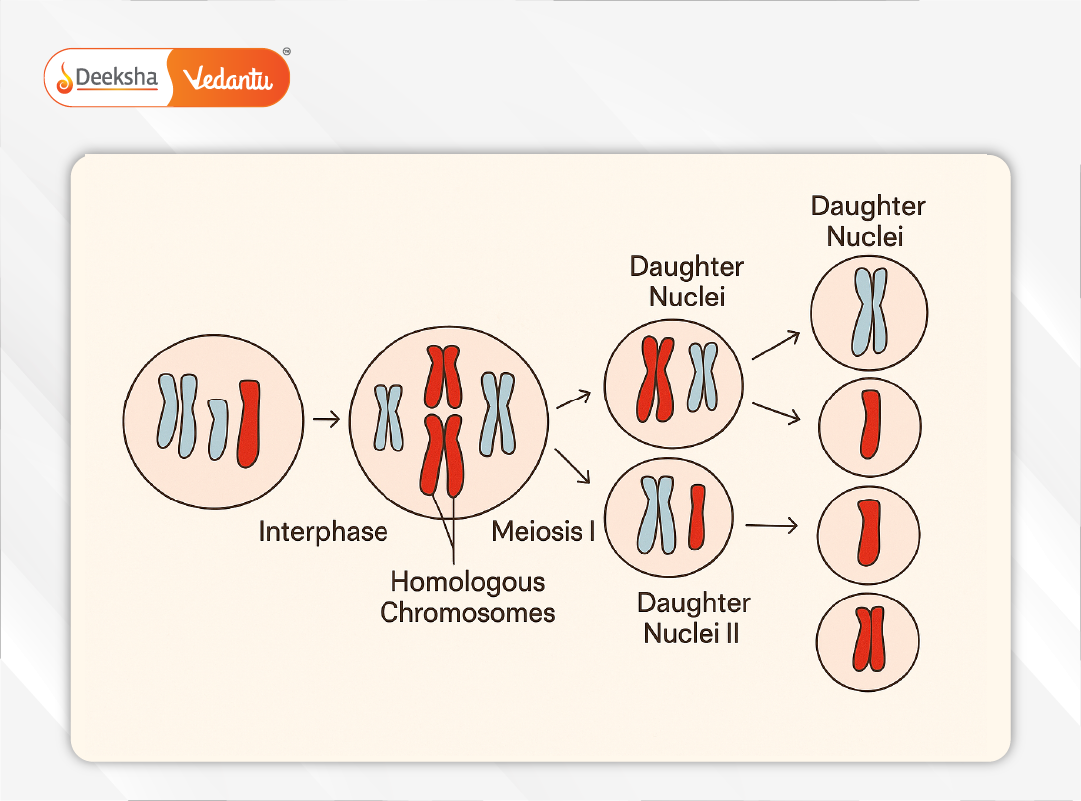
Depending on the type of organism and the purpose of division, there are different mechanisms involved. The two most common and critical types are mitosis and meiosis.
Types of Cell Division: Mitosis and Meiosis
Mitosis
Mitosis is the process by which a single somatic (body) cell divides to form two genetically identical daughter cells. It helps in:
- Growth of tissues and organs during development
- Repair of damaged tissues like skin, blood, and liver
- Replacement of dead or worn-out cells
- Asexual reproduction in organisms like amoeba
Read about Mitosis and Meiosis
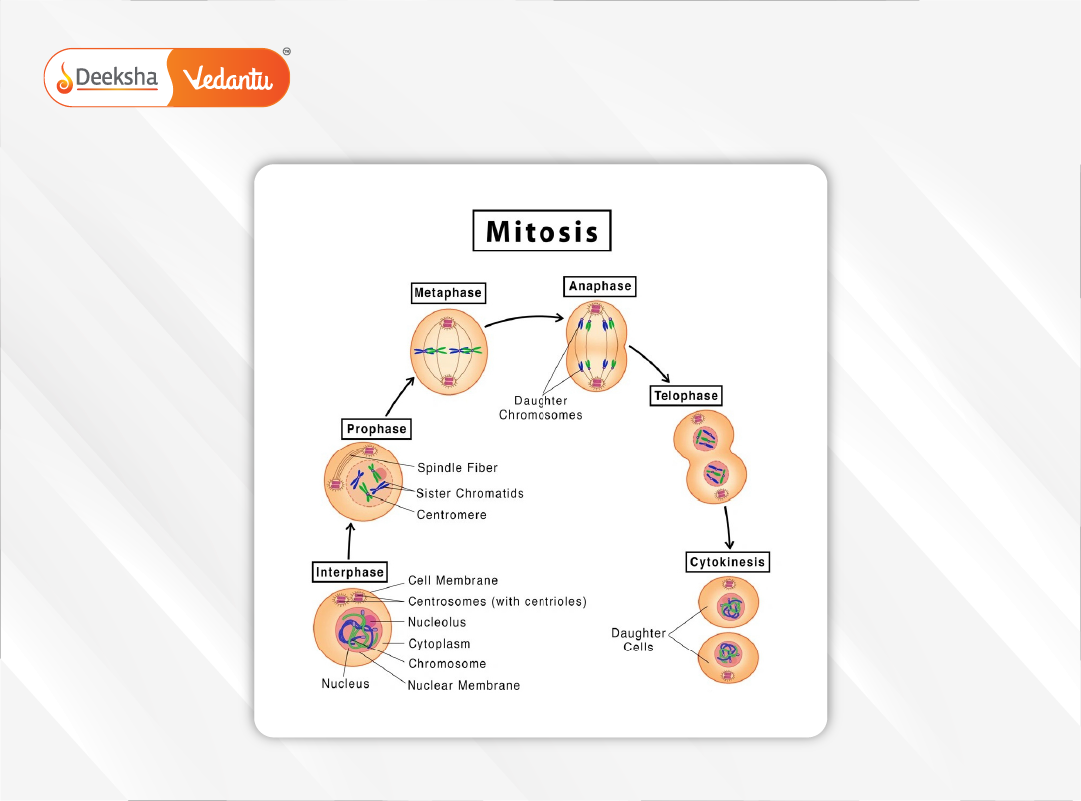
Meiosis
Meiosis occurs in germ cells to form gametes (sperm and eggs). Unlike mitosis, meiosis involves two successive divisions that result in four daughter cells, each with half the number of chromosomes.
Key roles of meiosis include:
- Enabling sexual reproduction
- Introducing genetic variation through recombination
- Ensuring the stability of chromosome number across generations
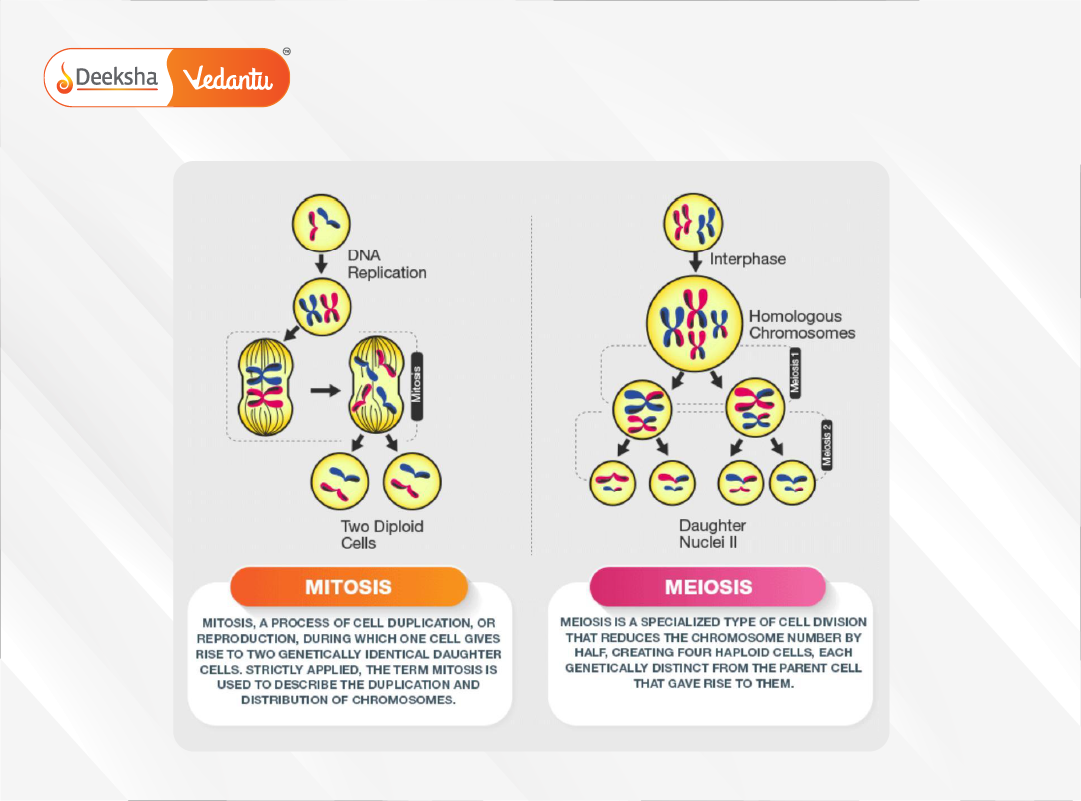
Stages of Mitosis
Mitosis is a continuous but well-defined process that ensures accurate distribution of genetic material. It is divided into the following stages:
1. Interphase
This is the preparatory phase where the cell undergoes significant growth and prepares for division. During the G1 phase, the cell increases in size and synthesizes proteins. In the S phase, DNA replication occurs, doubling the genetic content. Finally, the G2 phase allows for further growth and preparation, including the duplication of organelles.
2. Prophase
Chromatin fibers begin to coil and condense into distinct chromosomes, each consisting of two sister chromatids joined at the centromere. The mitotic spindle, composed of microtubules, begins to form, and centrioles move to opposite poles. The nuclear envelope begins to disintegrate, signaling the transition into early mitotic activity.
3. Metaphase
The spindle apparatus is fully formed, and the chromosomes align precisely along the metaphase plate—an imaginary plane equidistant from the two spindle poles. This alignment ensures that each daughter cell will receive an identical set of chromosomes. Spindle fibers attach to the kinetochores at each centromere.
4. Anaphase
The centromeres split, and the spindle fibers shorten, pulling the sister chromatids apart toward opposite poles. This movement is aided by motor proteins and ensures the equal separation of genetic material. The cell elongates in preparation for division.
5. Telophase
Once the chromatids reach the poles, they start to decondense back into chromatin. Nuclear envelopes re-form around each set of chromosomes, creating two nuclei in a single cell. The nucleolus reappears, and the spindle fibers disassemble, signaling the near end of mitosis.
6. Cytokinesis
Cytokinesis overlaps with telophase and completes the process of cell division. In animal cells, a contractile ring composed of actin filaments forms a cleavage furrow that pinches the cytoplasm. In plant cells, a cell plate forms between the two nuclei and develops into a new cell wall. The result is two genetically identical daughter cells, each with its own nucleus and complete set of organelles.
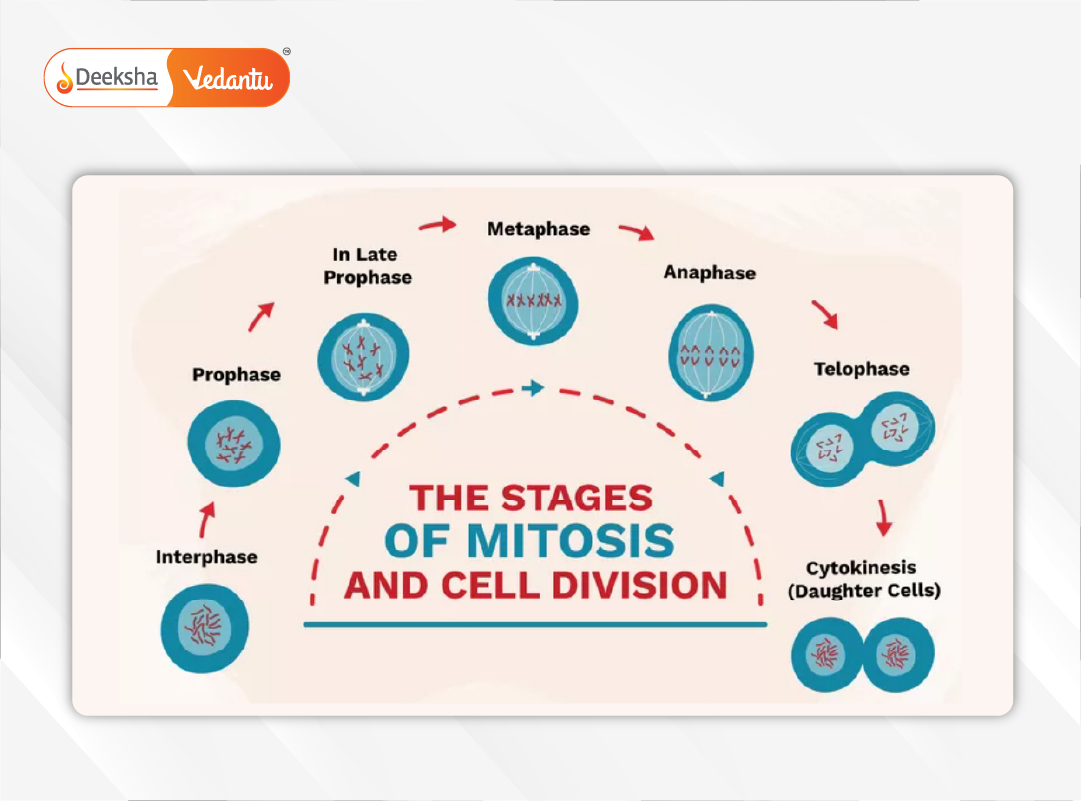
Understanding these stages is vital for visualizing how a cell transitions from one entity into two genetically identical units.
Importance of Cell Division
Cell division is not merely about multiplying cells. It is a tightly regulated mechanism that ensures life continues in an orderly fashion. Here are the critical reasons it matters:
- Growth and Development: In humans and animals, an increase in the number of cells allows the body to grow from an embryo to a fully developed organism.
- Tissue Repair and Healing: Damaged cells in tissues like skin and blood are continuously replaced through mitosis.
- Reproduction: In unicellular organisms, division is reproduction. In multicellular ones, meiosis ensures the production of reproductive cells.
- Genetic Continuity: By duplicating DNA before division, organisms ensure each new cell has the same genetic information.
- Variation in Offspring: Through meiosis, crossing-over and independent assortment introduce genetic diversity, which is vital for evolution.
Understand the Role of Cell Organelles
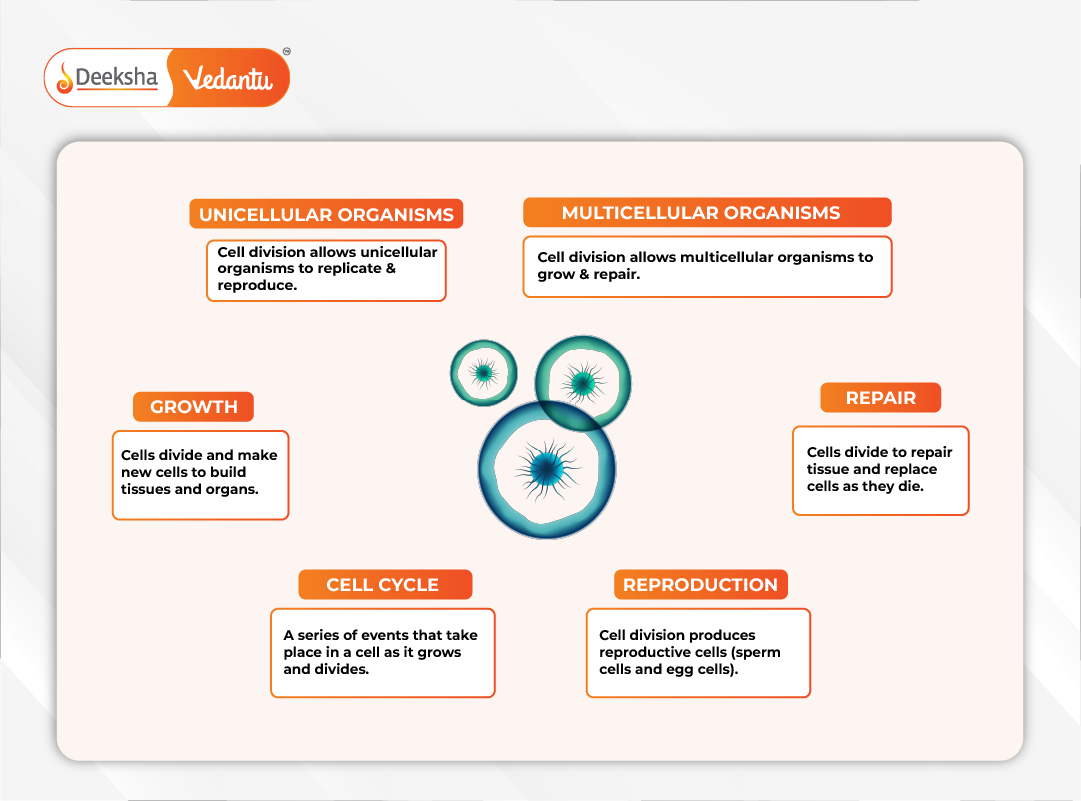
Related Concepts You Should Know
Cell Organelles and Their Role in Division
Organelles like the nucleus (where DNA resides), centrioles (which help form spindle fibers), and mitochondria (which provide energy) play essential roles during cell division.
Enzymes in Cell Division
Various enzymes, such as DNA polymerase and ligase, facilitate DNA replication and repair. Regulatory enzymes ensure the cell passes through checkpoints without errors.
Neurons and Non-Dividing Cells
Not all cells divide. Neurons and heart muscle cells, once mature, rarely undergo division. This explains why injuries to these tissues often result in permanent damage.
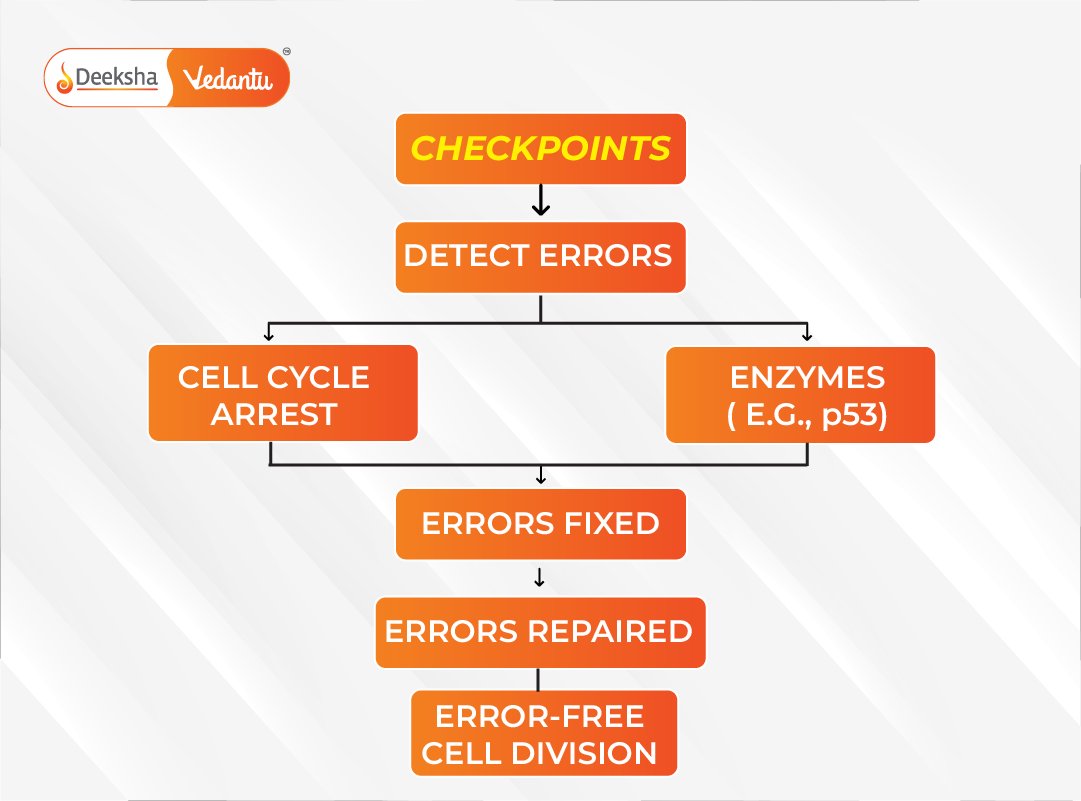
FAQs About Cell Division
1. What is the primary purpose of cell division?
To enable growth, replace damaged cells, and support reproduction in living organisms.
2. How is mitosis different from meiosis?
Mitosis forms two identical cells for growth and repair; meiosis forms four genetically different gametes for reproduction.
3. Are there any diseases related to faulty cell division?
Yes, cancer is a prime example where uncontrolled cell division leads to tumor formation.
4. What are the major stages of mitosis?
Interphase, Prophase, Metaphase, Anaphase, Telophase, and Cytokinesis.
5. Do all cells divide?
No. Some cells like neurons, cardiac muscle cells, and lens cells in the eye stop dividing after maturation.
6. What regulates cell division?
Proteins and enzymes like cyclins, CDKs (cyclin-dependent kinases), and tumor suppressors help regulate the cell cycle.
Conclusion
Cell division is the silent architect of life. Without it, no organism could grow, heal, or pass on genetic material to the next generation. From understanding the delicate balance of mitosis and meiosis to recognizing the importance of cell division in both simple and complex organisms, this concept underpins everything we know about biology.
For students, grasping this topic not only helps in exams but also lays the foundation for careers in medicine, research, genetics, and biotechnology. Keep revisiting the stages, visual aids, and associated concepts to truly master the science behind life’s smallest – but most powerful – process.
Stay curious, and remember – each breath you take, each wound you heal, and each generation born is a testimony to the incredible power of cell division.
Table of Contents


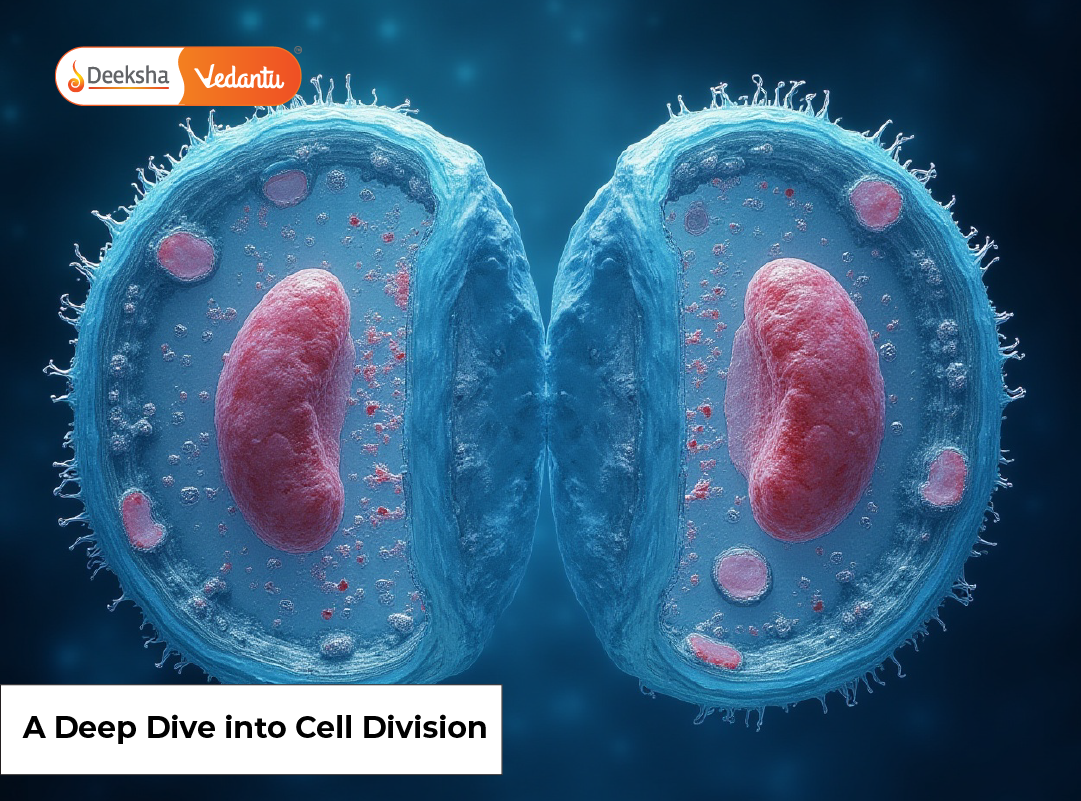












Get Social